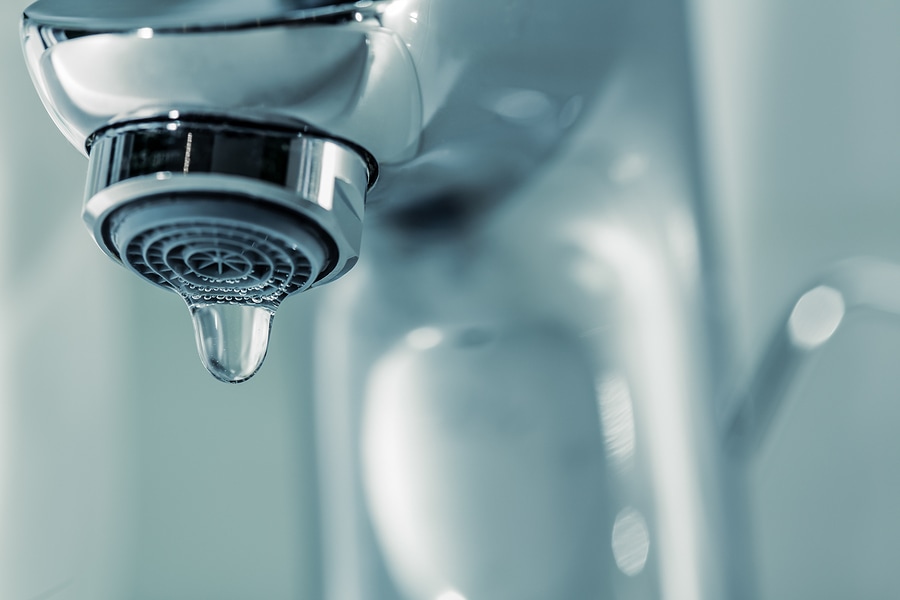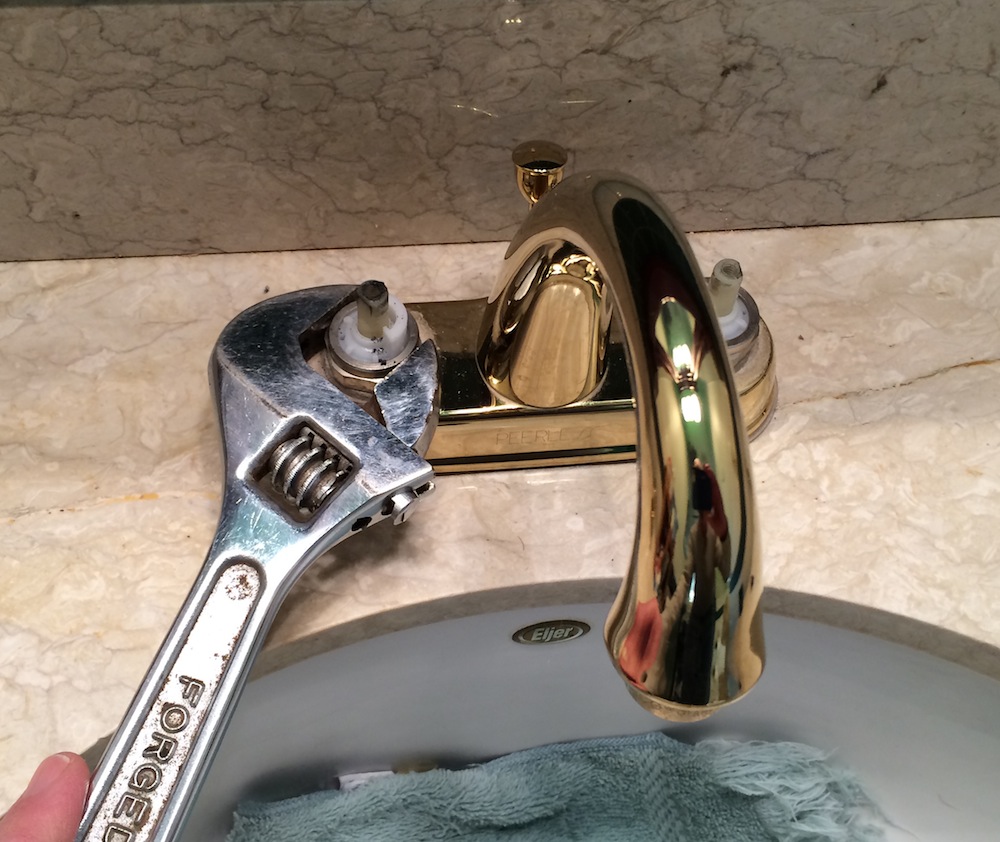Which It's Important to Resolve a Broken Faucet
Which It's Important to Resolve a Broken Faucet
Blog Article
Were you looking for tips concerning Why It's Important to Fix Leaky Faucets?

Trickling faucets may look like a small inconvenience, yet their influence goes beyond just the inconvenience of the noise. From drainage to incurring unnecessary financial prices and health and wellness risks, disregarding a trickling faucet can result in different consequences. In this write-up, we'll delve into why it's essential to resolve this common household issue immediately and efficiently.
Waste of Water
Ecological Effect
Dripping taps contribute dramatically to water wastage. According to the Epa (EPA), a solitary faucet leaking at one drip per second can throw away greater than 3,000 gallons of water each year. This not just strains water sources yet also affects communities and wildlife dependent on them.
Step-by-Step Guide to Repairing a Dripping Faucet
Tools Required
Prior to attempting to take care of a trickling faucet, collect the essential devices, consisting of an adjustable wrench, screwdrivers, substitute parts (such as washing machines or cartridges), and plumber's tape.
Common Faucet Issues and Their Solutions
Identify the type of faucet and the certain problem triggering the drip. Typical issues include damaged washing machines, rusty valve seats, or damaged O-rings. Refer to manufacturer guidelines or online tutorials for step-by-step advice on repair services.
Financial Prices
Raised Water Expenses
Beyond the ecological effect, leaking taps can inflate water expenses significantly. The gathered waste over time converts into greater utility expenditures, which might have been stayed clear of with timely fixings.
Prospective Residential Or Commercial Property Damages
Furthermore, prolonged leaking can lead to harm to components and surface areas bordering the tap. Water build-up can create discoloration, corrosion, and even architectural issues if left unattended, leading to extra repair prices.
Health Issues
Mold And Mildew and Mildew Growth
The continuous visibility of moisture from a leaking tap develops an optimal environment for mold and mildew and mold development. These fungi not only jeopardize interior air top quality yet additionally pose wellness dangers, specifically for people with respiratory conditions or allergies.
Waterborne Conditions
Stagnant water in leaking faucets can become a breeding place for germs and other virus, raising the threat of waterborne diseases. Pollutants such as Legionella germs prosper in stationary water, possibly leading to severe diseases when ingested or breathed in.
Do it yourself vs. Expert Repair work
Benefits and drawbacks of DIY Repair Service
While some might attempt to repair a leaking tap themselves, do it yourself repairs feature their very own set of difficulties. Without appropriate knowledge and devices, do it yourself efforts can intensify the problem or result in incomplete repairs, prolonging the trouble.
Advantages of Employing a Professional Plumber
Hiring a specialist plumber makes sure that the underlying reason for the dripping tap is dealt with properly. Plumbers have the know-how and devices to detect and repair tap problems successfully, saving time and minimizing the danger of additional damages.
Environmental Duty
Private Payment to Conservation
Taking obligation for fixing leaking taps lines up with more comprehensive efforts towards water conservation and ecological sustainability. Every person's actions jointly make a significant effect on maintaining precious sources.
Lasting Living Practices
By prioritizing timely fixings and adopting water-saving routines, people contribute to sustainable living methods that profit both existing and future generations.
Preventive Measures
Routine Upkeep Tips
To stop trickling faucets, do regular upkeep such as cleaning aerators, examining for leakages, and changing damaged parts quickly. Furthermore, take into consideration installing water-saving gadgets or upgrading to extra efficient fixtures.
Relevance of Prompt Repairs
Attending to trickling taps as soon as they're discovered stops more water wastefulness and potential damages, ultimately saving both water and money in the future.
Influence On Residential Property Worth
Assumption of Well-Maintained Residential Property
Maintaining a home in good condition, consisting of dealing with maintenance concerns like leaking taps, boosts its viewed worth and worth among possible buyers or occupants.
Impact on Resale Worth
Properties with properly maintained plumbing fixtures, including faucets, command higher resale worths in the real estate market. Resolving dripping faucets can add to a positive perception during residential property assessments and settlements.
Verdict
Dealing with a leaking tap exceeds simple convenience; it's a necessary action towards conserving water, reducing economic costs, and securing health and residential or commercial property. Whether with DIY repair work or specialist aid, taking action to repair trickling faucets is a little yet impactful means to advertise liable stewardship of resources and contribute to a healthier, a lot more lasting future.
How to Fix a Dripping or Leaky Faucet
A leaking faucet is one of the most common problems that homeowners encounter, but it being commonplace doesn’t make it any less annoying. The constant drip drip drip of a leaking bathtub faucet, showerhead, or sink tap can disturb your home’s serenity. Left neglected, a dripping faucet can also result in higher water bills and discoloration or mold growth in your sink or plumbing fixtures.
Fortunately, you don’t have to be a trained plumber to know how to stop a dripping faucet. With some basic tools, replacement parts, and a little patience, leaky faucet repair is a breeze. In this article, we’ll explain what causes dripping faucets and how you can fix them.
What Causes a Leaking Faucet?
Kitchen and bathroom faucets come in all manner of designs, but most involve some combination of valves, O-rings, seals, and washers. The O-ring is usually the weakest link, but any one of these pieces can wear down over time. Heat, moisture, temperature fluctuations, minerals, mold, and movement can contribute to warping and corrosion, breaking the watertight seal. This just comes with the territory of being a homeowner. Everything is always subject to wear and tear, and some component parts of your appliances and fixtures need to be replaced on occasion. At least replacement O-rings are cheap!
More rarely, dripping faucets can be a symptom of excessively high water pressure. Were this the case in your home, you would probably notice that the leak is not isolated to one faucet. Water pressure issues are harder to resolve on your own. We recommend contacting a professional plumber if you suspect your water pressure is too high.
How to Fix a Dripping Faucet
Pipe wrench or monkey wrench Allen wrench set Screwdrivers Old towel or rag Shut off the water.
Before you do anything, you need to turn off the water to keep from drenching your kitchen or bathroom. You should find a valve under the sink and against the wall. Once you’ve turned this valve, try turning the faucet on to confirm that the water source has been cut off.
If you can’t locate your local valve for the faucet you’re working on, you can always shut off the water to the house at the main valve. Of course, this will prohibit anyone from using the sinks, showers, or toilets while you’re working on the faucet that’s giving you trouble.
Plug or block the drain.
You’ll be disassembling the faucet and removing some small bits of hardware. Plug the drain with a stopper or rag to avoid the possibility of a small screw falling into your P-trap.
Take apart the faucet assembly.
There are several varieties of kitchen and bathroom faucets, each with its own manner of assembly. For detailed instructions on how to disassemble your faucet, you can refer to the fixture’s manual or contact the manufacturer. If you know whether you have a ball, disc, cartridge, or compression faucet, you can find detailed schematics online.
In general, you need to begin by removing the faucet handles. You might notice a small screw that you’ll need to remove with a screwdriver or Allen wrench. If you don’t see any visible securing hardware, it’s likely hidden under a decorative cap that can be unscrewed or popped off with flathead screwdriver.
Remove each piece methodically, consulting a schematic when necessary. Take notes or arrange the pieces in such a way to make it easier to correctly reassemble the faucet later.
Remove the cartridge.
Once you’ve removed the handles and securing hardware, you should be able to remove the valve cartridge or stem. Some cartridges will slide right out. Other faucet models will require you to loosen a nut with a pipe wrench before you can remove the valve stem.
Examine the exposed hardware.
With the cartridge or stem removed, inspect the component parts. Check the rubber O-rings for wear and tear. Also examine the seat washer for corrosion or other damage. These pieces are usually the responsible parties for a dripping faucet, but it’s worth inspecting the other component parts while you have the faucet disassembled.
Find replacement parts.
Once you’ve identified which faucet component has failed, find an identical replacement. Your local hardware store should have O-rings, seat washers, and other standard components in stock. If you have a luxury or uncommon faucet, you may have to contact the manufacturer for a replacement part.
It’s a good idea to take your old parts with you to the hardware store so you can compare them with the store’s inventory and be sure you’re purchasing the correct replacement.
Reassemble the faucet.
With your new parts in hand, reconstruct the faucet and handles. Don’t be tempted to overtighten screws or nuts. You might think this could create a better seal, but it can instead damage or bend a delicate part of the assembly and create a new problem for you.
Turn on the water and test the faucet.
The only thing left to do is test your work. Unplug the sink, turn the water back on, and try the faucet. Congratulate yourself on a job well done!
https://www.libertyhomeguard.com/how-to-fix-a-dripping-or-leaky-faucet/

Hopefully you liked our excerpt on 4 Common Reasons for a Leaky Faucet. Thanks a lot for taking a few minutes to read through our piece. Appreciated our write up? Please quickly share it. Let another person discover it. I cherish your readership.
Report this page